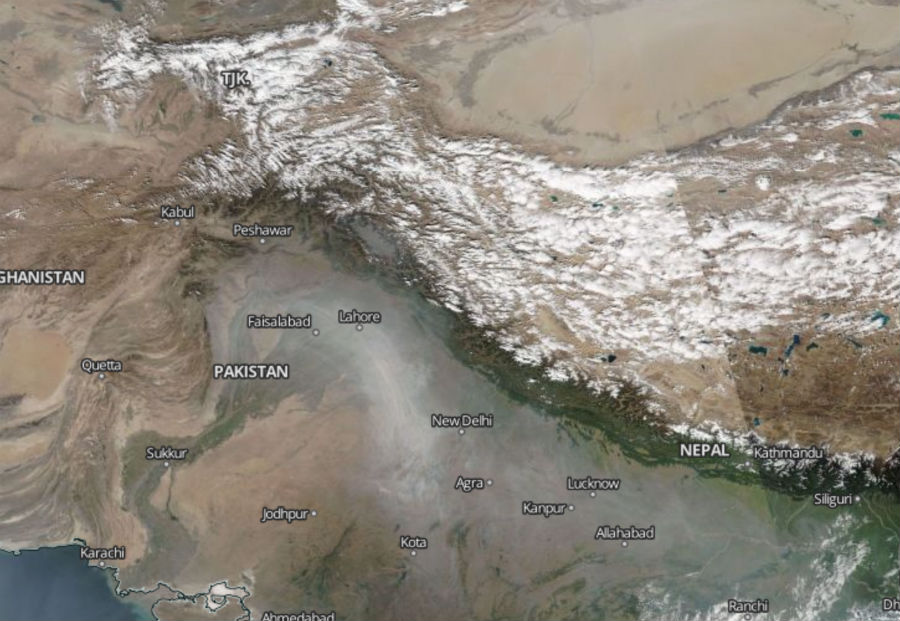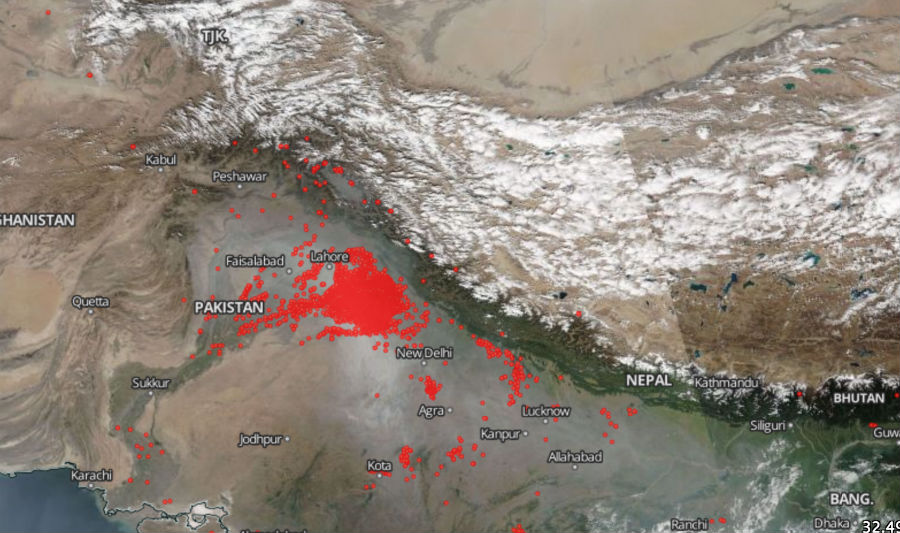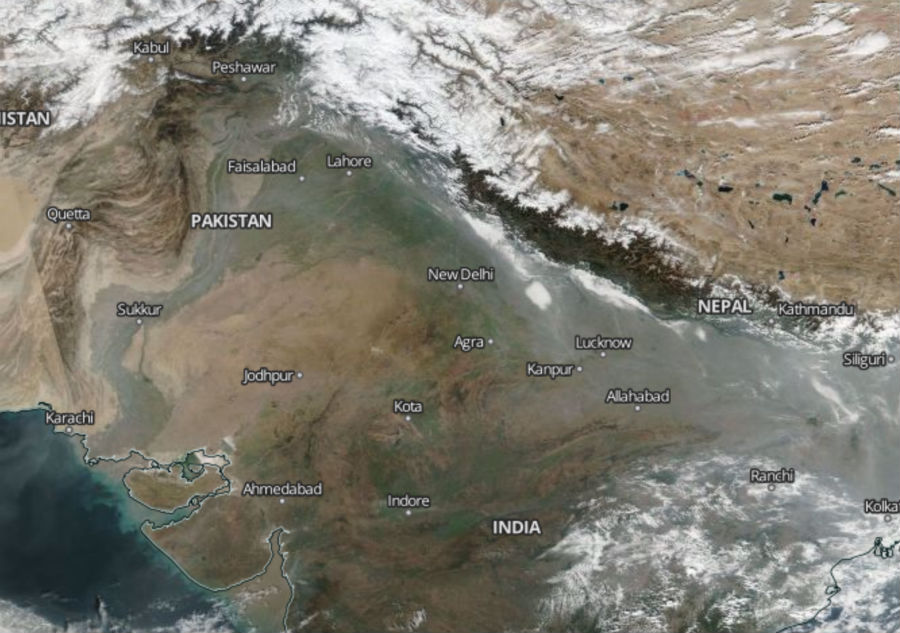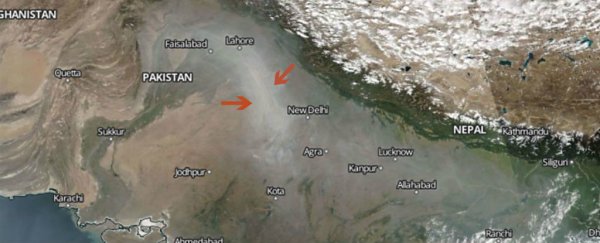Earlier this week, the Indian government declared a national emergency, as air pollution in its capital, New Delhi, reached levels more than 16 times the safe limit. Schools closed, locals began to flee, and Delhi's chief minister compared the city to a "gas chamber".
Now, thanks to new satellite images from NASA, we can see just how bad things are at the moment, with the thick layers of smog hanging so heavy over the city, you can actually see it from space.
As you can see in the NASA Worldview satellite image below from November 1, there's a clear channel of smog running from the city of Faisalabad down to Kota, with New Delhi in the absolute thick of it:
 NASA Worldview
NASA Worldview
While recent Diwali fireworks in New Delhi have been brought into question as part of the reason for why the city's pollution levels hit "severe" levels on Monday and over the weekend, officials say the biggest contribution to the pollution levels has been the fires burning in the neighbouring regions of Punjab and Haryana.
Here you can see what NASA describes as "fires and thermal anomalies" in those areas on November 1:
 NASA Worldview
NASA Worldview
"Although India's environmental court, the National Green Tribunal, told the government last year to stop farmers from burning the straw left over from their rice harvests, NASA satellite images in recent weeks have shown virtually no abatement," Geeta Anand reports for The New York Times.
"Farmers are continuing to burn most of the leftover straw - an estimated 32 million tons - to make room to plant their winter wheat crop."
For reference, here's the same area on 13 December 2015:
 NASA Worldview
NASA Worldview
As we reported on Monday, when researchers measure air pollution, they typically take two types of particles into consideration: PM10 is particulate matter 10 micrometres (μm) or less in diameter, and PM2.5 is particulate matter 2.5 μm or less in diameter.
Both types of pollution are measured by the average amount per cubic metre, and according to data from the System of Air Quality and Weather Forecasting and Research (SAFAR), New Delhi today saw PM10 hit 876 μm/m3, and PM2.5 hit 680 μm/m3 earlier this week.
To put that into perspective, the very upper limits for "safe" levels for PM10 and PM2.5 are considered to be 100 μg/m3 and 60 μg/m3 respectively.
Fortunately, New Delhi conditions are improving, and now sit at 474 μm/m3 for PM10 and 295 μm/m3 for PM2.5.
To give you an idea of what things have looked like on the ground over the past few days, here's the Tak Mahal:
And on the street:
This is incredible:
Hopefully, as the city moves out of winter, things will ease up slightly for the people of New Delhi, with researchers finding that the low wind and increased home heating of winter typically makes air pollution in the city worse.
Watch this space.
H/T Mashable
